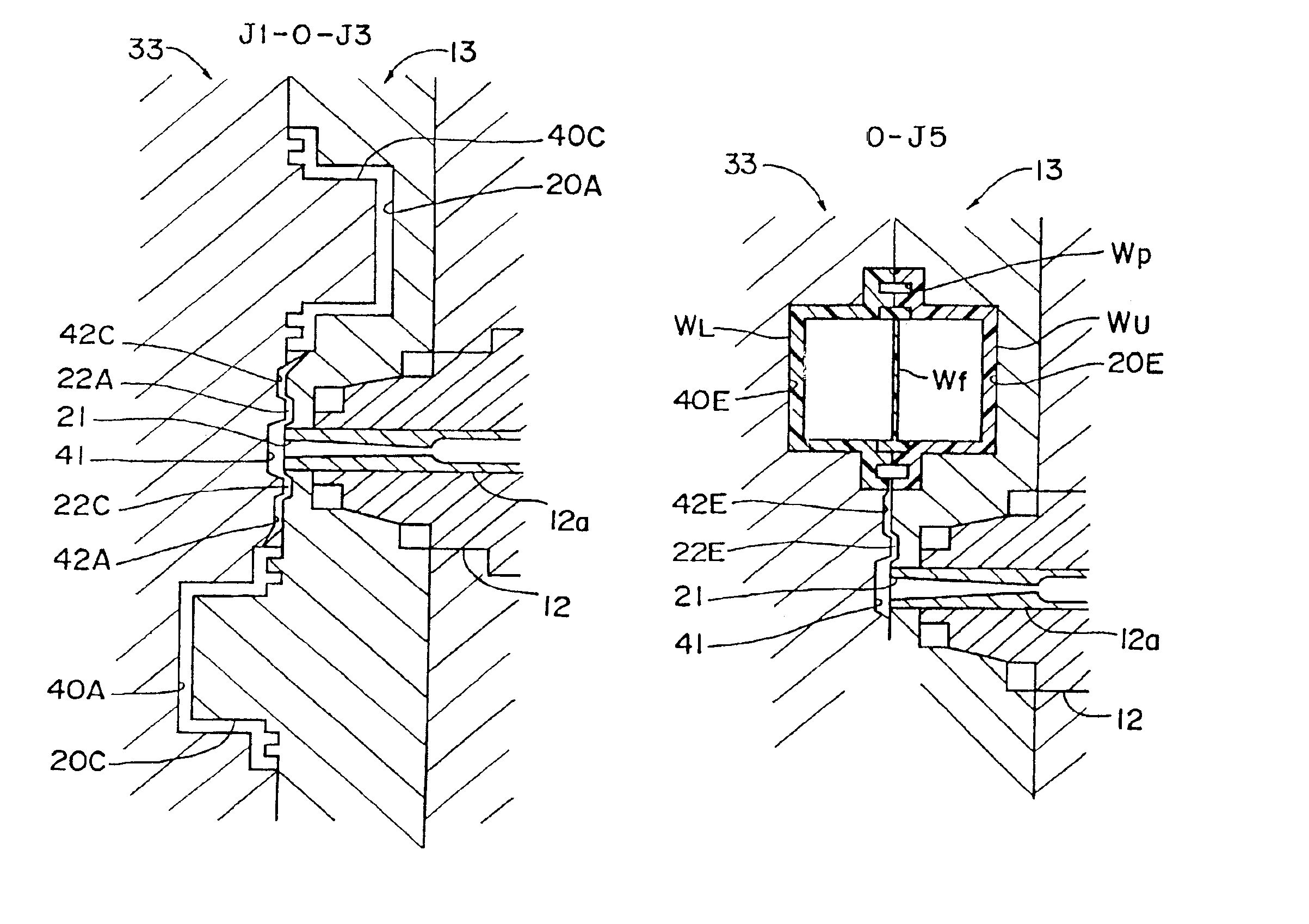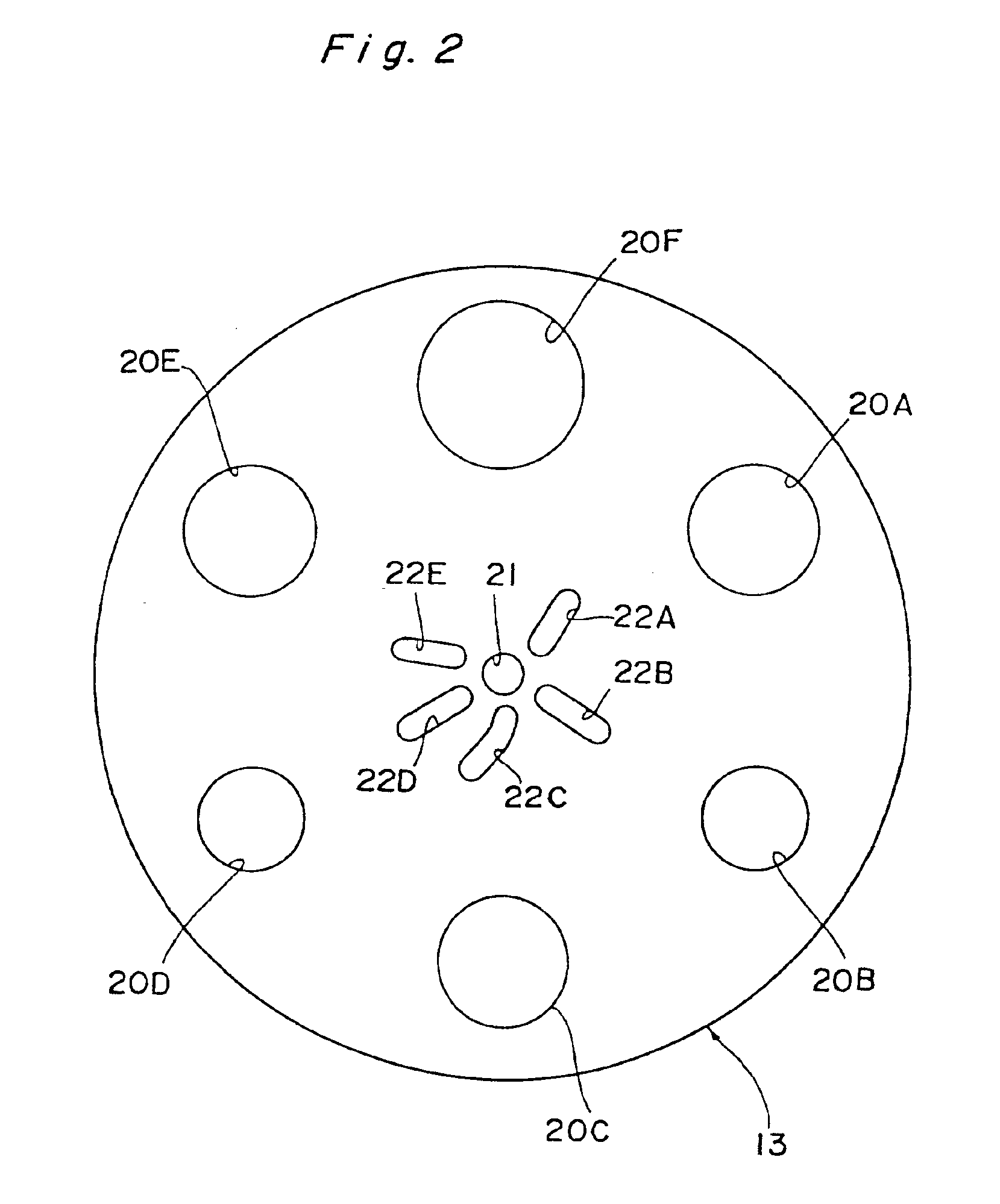Apparatus for manufacturing synthetic resin hollow member incorporating an intermediate element therein
a technology of synthetic resin and intermediate elements, which is applied in the direction of turning machines, turning machine accessories, drawing profiling tools, etc., can solve the problems that manual operation cannot be eliminated, and achieve the effect of high bond strength of joined half bodies, good sealing characteristics and more stably secured
- Summary
- Abstract
- Description
- Claims
- Application Information
AI Technical Summary
Benefits of technology
Problems solved by technology
Method used
Image
Examples
Embodiment Construction
[0057]One embodiment of the present invention will now be described in detail with reference to the accompanying drawings which illustrate by way of example the embodiment as applied to the manufacturing of a synthetic resin-made oil strainer.
[0058]FIGS. 28 through 31 show an oil strainer W as a synthetic resin hollow member embodying the invention. The oil strainer W is a hollow member comprising an upper half body WU having an outlet tube portion Wo, and a lower half body WL having an inlet tube portion Wi, and has a filter Wf (see FIG. 31) disposed in a hollow interior thereof for filtering foreign matter present in incoming oil.
[0059]The oil strainer W, as will be described in detail hereinafter, is a product manufactured in the form of a hollow member incorporating an intermediate element (filter Wf) by the so-called die rotary injection (DRI) method such that upper and lower half bodies WU, WL, and a filter Wf as the intermediate element to be disposed in the hollow member are...
PUM
| Property | Measurement | Unit |
|---|---|---|
| angle | aaaaa | aaaaa |
| angle | aaaaa | aaaaa |
| angle | aaaaa | aaaaa |
Abstract
Description
Claims
Application Information
 Login to View More
Login to View More - R&D
- Intellectual Property
- Life Sciences
- Materials
- Tech Scout
- Unparalleled Data Quality
- Higher Quality Content
- 60% Fewer Hallucinations
Browse by: Latest US Patents, China's latest patents, Technical Efficacy Thesaurus, Application Domain, Technology Topic, Popular Technical Reports.
© 2025 PatSnap. All rights reserved.Legal|Privacy policy|Modern Slavery Act Transparency Statement|Sitemap|About US| Contact US: help@patsnap.com



